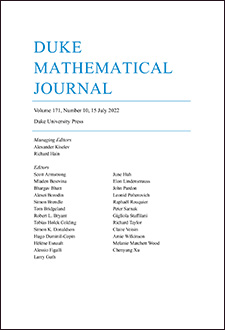Abstract
The rank of a hierarchically hyperbolic space is the maximal number of unbounded factors in a standard product region. For hierarchically hyperbolic groups, this coincides with the maximal dimension of a quasiflat. Several noteworthy examples for which the rank coincides with familiar quantities include: the dimension of maximal Dehn twist flats for mapping class groups; the maximal rank of a free abelian subgroup for right-angled Coxeter groups and right-angled Artin groups (in the latter this can also be observed as the clique number of the defining graph); and, for the Weil–Petersson metric, the rank is the integer part of half the complex dimension of Teichmüller space.
We prove that, in a hierarchically hyperbolic space (HHS), any quasiflat of dimension equal to the rank lies within finite distance of a union of standard orthants (under a very mild condition on the HHS satisfied by all natural examples). This resolves outstanding conjectures when applied to a number of different groups and spaces.
In the case of the mapping class group, we verify a conjecture of Farb. For Teichmüller space we answer a question of Brock. In the context of certain cubical groups, our result handles novel special cases, including right-angled Coxeter groups.
An important ingredient in the proof, which we expect will have other applications, is that the hull of any finite set in an HHS is quasi-isometric to a cube complex of dimension bounded by the rank. (If the HHS is a cube complex, then the rank can be lower than the dimension of the space.)
We deduce a number of applications of these results. For instance, we show that any quasi-isometry between HHSs induces a quasi-isometry between certain factored spaces, which are simpler HHSs. This allows one, for example, to distinguish quasi-isometry classes of right-angled Artin/Coxeter groups.
Another application of our results is to quasi-isometric rigidity. Our tools in many cases allow one to reduce the problem of quasi-isometric rigidity for a given hierarchically hyperbolic group to a combinatorial problem. As a template, we give a new proof of quasi-isometric rigidity of mapping class groups, which, once we have established our general quasiflats theorem, uses simpler combinatorial arguments than in previous proofs.
Citation
Jason Behrstock. Mark F. Hagen. Alessandro Sisto. "Quasiflats in hierarchically hyperbolic spaces." Duke Math. J. 170 (5) 909 - 996, 1 April 2021. https://doi.org/10.1215/00127094-2020-0056
Information





